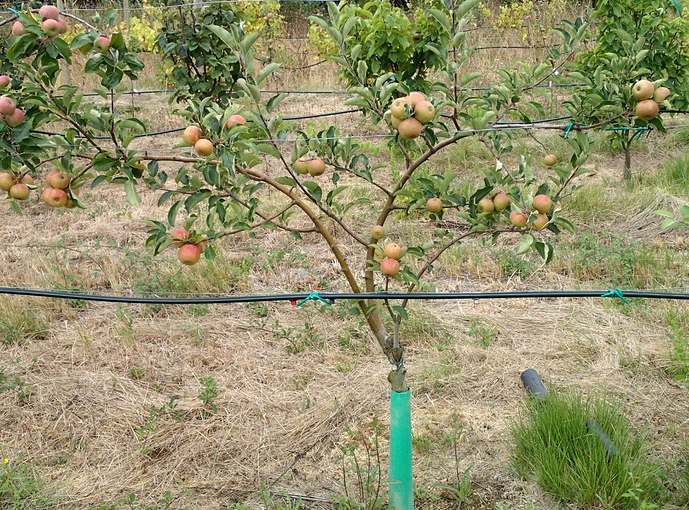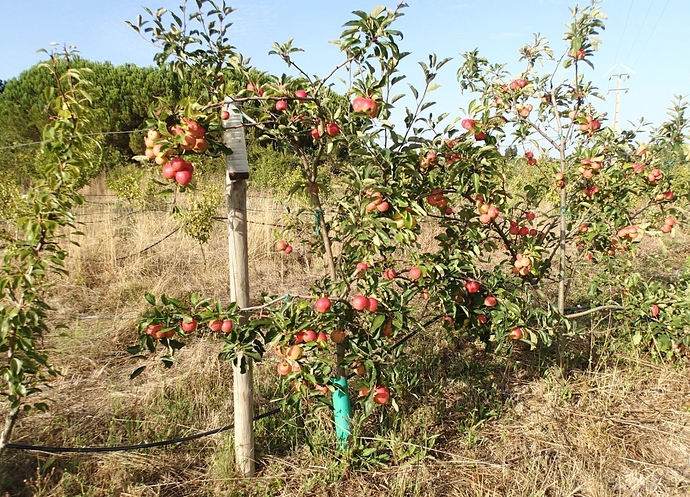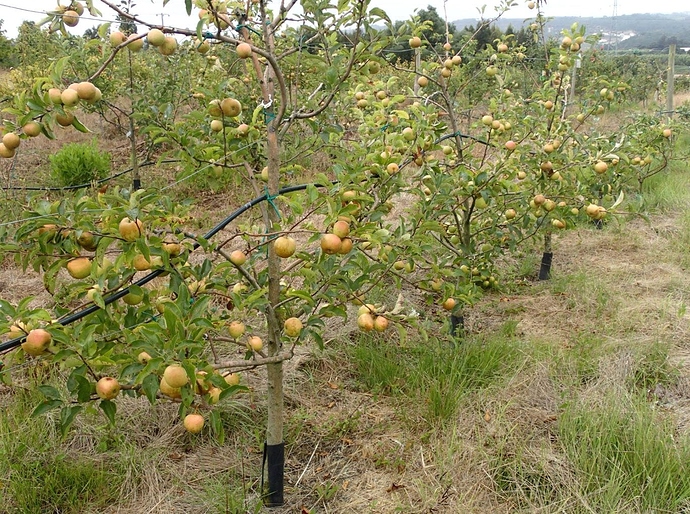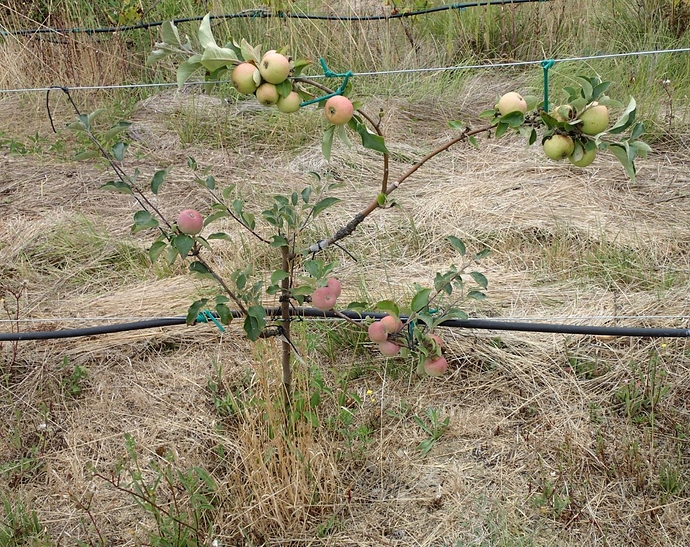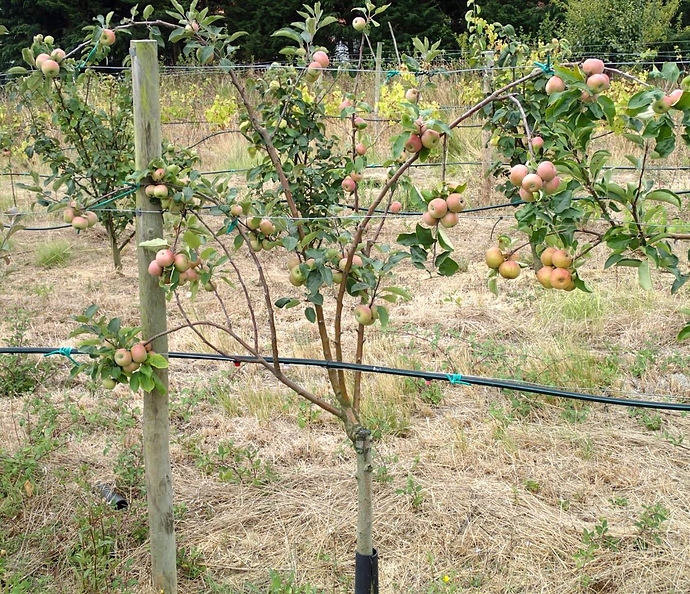Chikn,
I’m grafting on 5th leaf trees changing varieties, so it’s not unusual that they have this production on the second year after grafting. When i planted most of my apple trees i made the mistake of conforming to the varieties that where available over here and planted several of the same variety.
I have lots of Gala and Golden and they are very vulnerable to scab and i want to avoid spraying as much as i can, so i’m changing them to resistant varieties, like Topaz, Ariane and others.
These original trees had no rootstock identification when i bought them, but they are probably using MM111 or MM106 which is not bad considering i have a dense clay soil and if i use a not so vigorous root stock they would take forever to grow. My recent planted trees are using M7, M26 and i even have some in M9 to test but these are growing very slowly in these conditions.
When i started trading scions and collecting more interesting varieties i decided to graft them directly on the old variety i was replacing instead of removing the tree.
This way the new varieties had a great head start. Grafted in March they grew like weeds and in the first year i began training them and bending the branches. Sometimes they even give me a few apples the same year i grafted them (it’s rare but it happens). In the second year they tend to produce well and i usually thin them but i didn’t this year so some have a great load (greater than i usually allow)
I also use a few very old trees i have, to test some varieties and as a reserve scion stock. Here’s a very old tree that has more than a dozen varieties grafted. The “Patte du Loup” apples of the photo i posted are grafted on one of its branches.
I have done the same with more recent planted trees (second leaf duplicated tree, grafted with new interesting varieties) and with these younger trees they will only reach the same production in a couple of years.
I do tend to leave a few apples tough, to see if i got the right variety - sometimes we have a few surprises with tradings.
And this way i don’t have to wait 3 or 4 years to see if someone made a mistake.
Guiding the branches horizontally helps in early production if you don’t mind slowing the overall development of the tree. And i don’t. I prefer them small and productive than full of leaves and branches and no apples.
Beware of very heavy production with very young trees guided this way. They can exhaust themselves, spend all the reserves and die.

